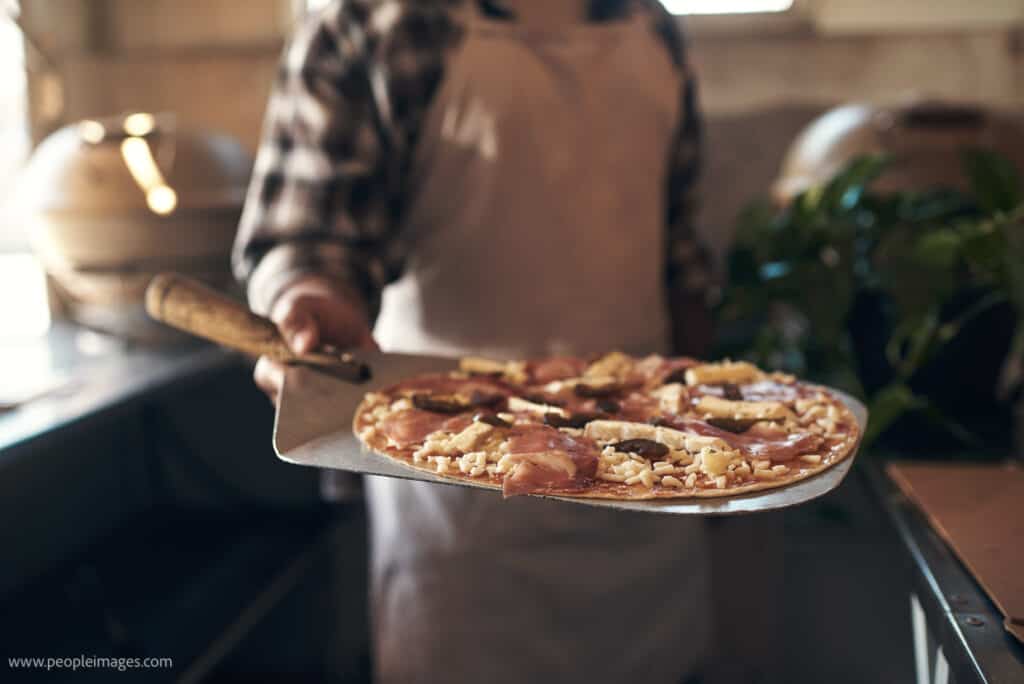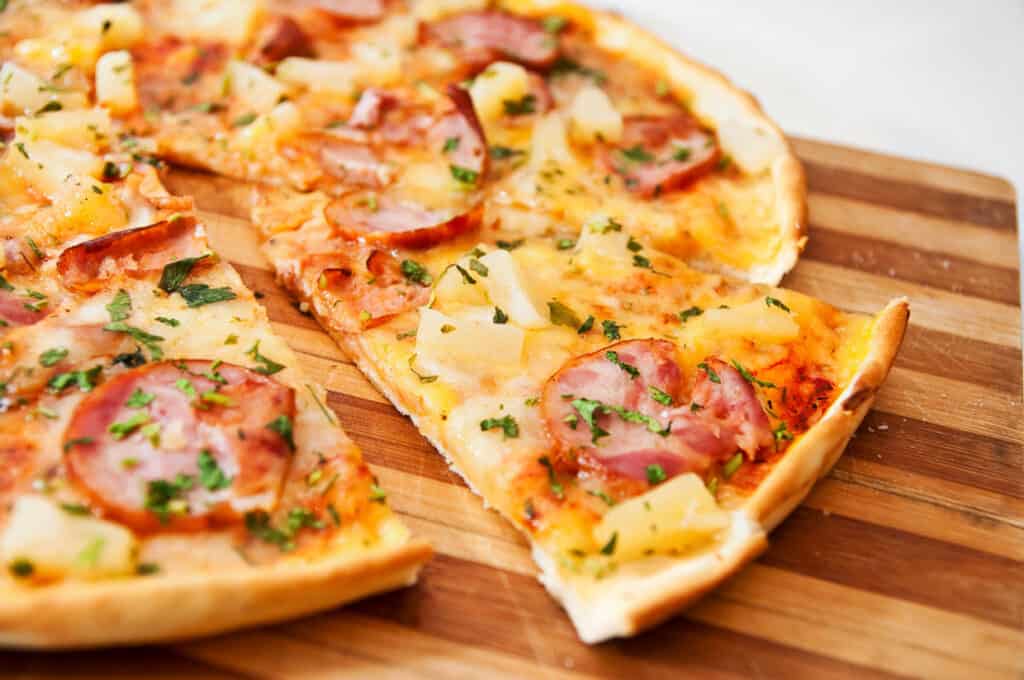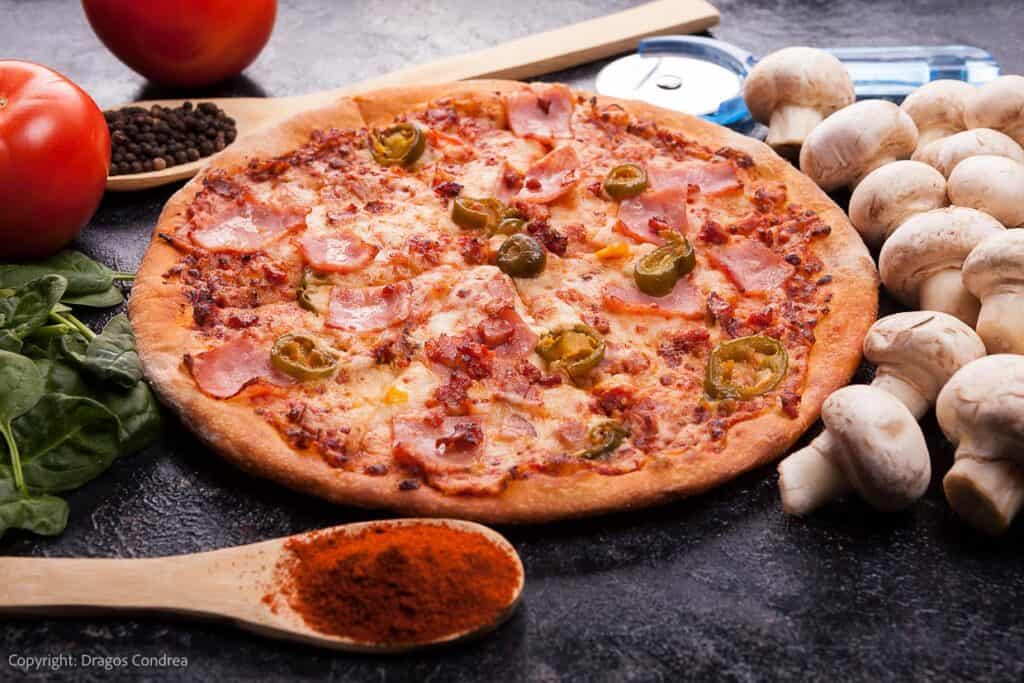Everyone loves family

Nothing puts a damper on
What is a pizza bar?
A
At its most basic, a
Making pizzas is fun and it gives guests something to talk about, encouraging conversation and socializing. A
“DIY
— Michelle Price, Honest and Trulypizza night is the perfect time to try something new in a low-stakes environment. Put out different toppings each week from artichoke hearts to blanched asparagus on the veggie side to Canadian bacon and grilled chicken on the meat side. It’s a great way for kids, especially, to expand their palates in a fun way.”

How to create your pizza bar
Setting up a DIY
Choose your base
When it comes to setting up a
Homemade
Store-bought
Pre-made
Specialty crusts: If you are feeding people with allergies or dietary restrictions, offer some specialty crusts so they can participate as well. These days you can buy delicious
FDL’S 75 Best Bites

Our cookbook with 75 tasty recipes will be your go-to kitchen companion for easy dinners with ad-free recipes right at your fingertips. Crafted by experienced chefs and recipe developers, this collection offers a treasure trove of tried-and-true dishes that make mealtime a breeze.
Get the Recipe: FDL’S 75 Best Bites
Choose and set out your toppings
One of the best things about a DIY
Sauce: Tomato-based
Cheese: Mozzarella is the traditional
Meats: Popular
Vegetables: Offer a variety of veggies like onions, bell peppers, mushrooms, cherry tomatoes, olives, artichoke hearts, spinach and fresh tomatoes. Some creative options include chopped broccoli or cauliflower, shaved Brussels sprouts, corn, fennel or thinly sliced potatoes.
Fruit: Pineapple is a controversial
Herbs and Spices: Don’t forget to include some herbs and spices for added flavor. Offer options like basil, oregano or Italian seasoning; minced or caramelized garlic; red pepper flakes, harissa paste or Calabrian chile paste; thinly sliced jalapenos or freshly ground black pepper.
Finishing touches: To impress your guests, offer some finishing drizzles like aged balsamic vinegar, truffle oil or chili oil. A handful of fresh arugula or a shower of fresh herbs like basil, cilantro, dill, parsley, chives or oregano brighten up a

Don’t Forget the Extras
While the toppings are the star of the show, you can include a few extras to take your DIY
Dipping sauces: Provide a variety of dipping sauces like ranch, sriracha ranch, marinara or garlic butter.
Salad bar: Set up a small salad bar with greens, veggies and various dressings. Some people will appreciate having salad to balance out their
Drinks: Don’t forget to have plenty of drinks available to wash down all that
Dessert: Finish off the meal with a sweet treat. Serve a simple dessert like cookies or brownies, hit up an Italian bakery for some fancy cannoli, or go all-in on the
“When we have another couple over for
— Susannah Brinkley Henry, Feast + Westpizza night, I always invite them to bring one or two of their favorite toppings. I make dough ahead of time, then we put together two pizzas with everyone’s customizations while we drink wine and catch up before dinner.“

Setting out your spread
Now that you have all your ingredients and accompaniments, it’s time to set up your DIY
- Put ingredients in separate bowls or containers to make it easy for people to choose their toppings. It also makes it easier to keep things separate in case of allergies or intolerances.
- Label everything. Labels are essential if you have guests with dietary restrictions or allergies.
- Make sure you have plenty of utensils and plates on hand.
- Consider using a
pizza stone orpizza oven for even cooking. - Set your oven to the highest temperature and have two racks so you can cook at least two pizzas at a time. If you have a
pizza oven, you’re in luck because they’ll cook eachpizza in just a few minutes.
Wrapping Up
A DIY
Robin Donovan is the author of more than 40 cookbooks, including the bestselling Campfire Cuisine, Ramen Obsession, and Ramen for Beginners. A food writer, recipe developer, and food photographer, she is the creator of the food blog All Ways Delicious, where she shares easy recipes for the best dishes from around the world.